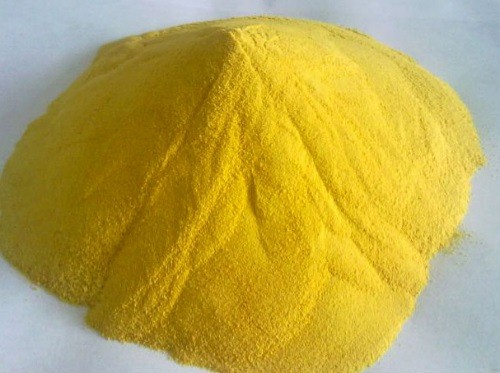Aluminium Chloride - Overview

Aluminium chloride is widely used for Friedel-Crafts reaction as a catalyst. AlCl3 works as an electron acceptor (Lewis Acid). AlCl3 is able to direct the reaction more efficiently and effectively. This catalyst is used to synthesise alkyl benzene from alkyl halide and benzene. It is also used for many industrial applications such as petrochemical manufacture, pharmaceuticals, dyes intermediates and others organic chemicals. Moreover, it can be used for metallurgical industry, cosmetics, antiperspirants, metallurgical industry, and lubricants.

Manufacturing Process
There are mainly two ways of synthesis: manufacturing aluminium chloride with chlorine or hydrogen chloride or obtaining aluminium chloride by extraction from raw materials. In the former method, aluminium chloride is widely manufactured by reacting with an aluminium metal with chlorine or hydrogen chloride. This reaction occurs at temperature ranging from 650 to 750°C and is classified as an exothermic reaction. In the latter method, to produce aluminium chloride, the aluminium metals can be extracted from raw material, such as clay or fly ash.

The Uses of Aluminium Chloride
Aluminium chloride is utilized for the isomerization and compounding of hydrocarbons, and supports in the polymerization of hydrocarbons with lighter molecular weight, the compound is mainly used in the petrochemical industry.
Metallurgy Industry
Aluminium chloride is used to make aluminium metal. Due to its explosive reaction upon contact with water, it requires care in such situations. It can be combined with aluminium as a catalyst to synthesize metal complexes using a process called Fisher-Hafner synthesis. The primary components of this reaction are metal halides. Besides, aluminium chloride is also applied as a flux and in the electrolytic production of aluminium melting. It is also necessary in the manufacturing of titanium dioxide and butyl rubber.Detergent Industry
It is used in the process of manufacturing dodecylbenzene, a colourless liquid which is a precursor to sodium dodecylbenzenesulfonate, an important component (15%) in laundry detergent. In the process of manufacturing sodium dodecylbenzenesulfonate for the laundry industry, AlCl3 acts as an acid catalyst when alkene is reacted with excess benzene to form alkylbenzene compound. The resulting mixture is sulfonated to produce sulfonic acid which is neutralized with alkali to give sodium dodecylbenzenesulfonate.Petrochemical Industry
Aluminium chloride is utilized for the isomerization and compounding of hydrocarbons, and supports in the polymerization of hydrocarbons with lighter molecular weight, the compound is mainly used in the petrochemical industry.Intermediate Chemicals
The most important aluminium chloride in a chemical reaction is its role as a catalyst in Freidel-Crafts reactions. In these reactions, aluminium chloride is used to prepare anthraquinone, which is used in the dyestuffs industry. Aluminium chloride is also used to insert aldehyde groups in aromatic system rings, the general process used for this is the Gattermann-Koch reaction. AlCl3 act as a catalyst in the “ene –reaction” and is used in manufacturing of polystyrene. AlCl3 alkylation process produce chemicals that are used in production of detergents and ethyl benzene.Hydrated Aluminium Chloride
The hexahydrate form of aluminium chloride has little applications, usually as a component in many cosmetic products and toiletries. Hydrated aluminium chloride is often applied in low concentrations in antiperspirants. Prescription products used to control hyperhidrosis have a higher concentration of the compound. There have also been clinical trials to understand the impact of aluminium chloride used in anti-acne preparations.Waste Water Treatment
Aluminium chloride is used as a coagulant for many industrial and sanitary wastewater treatment applications, because of its high efficiency, effectiveness in clarification, and utility as a sludge dewatering agent. The chemical leaves no residual colour and offers very good turbidity removal.PRODUCT IDENTIFICATION
| Chemical Formula | AICI3 |
| Synonym | Aluminium(III) Chloride |
| H.S. Code | 2827.32.00 |
| CAS No. | 7446-70-0 |
| Molecular Weight | 133.34 g/mole |
PRODUCT SPECIFICATION
| Property | Units | Value |
|---|---|---|
| Appearance | Yellow Crystals | |
| Assay | % | 98.0 (min) |
| Iron (Fe) | % | 0.05 (max) |
| Heavy metals (as Pb) | % | 0.005 (max) |
| Sulphate (SO4) | % | 0.05 (max) |
